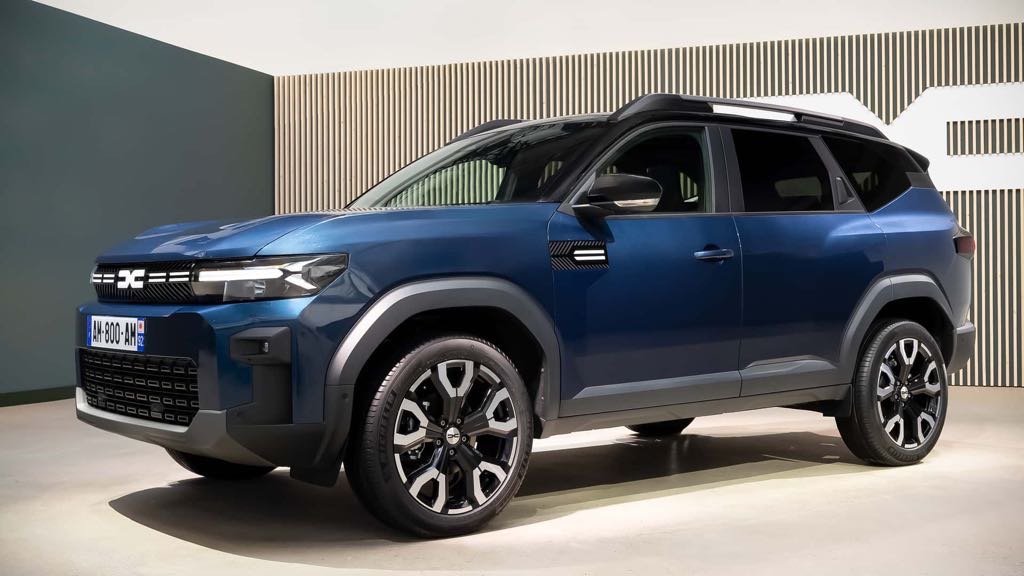
Renault Bigster is based on the new generation Duster, to get 7-seater variant
Renault’s budget brand Dacia has revealed the Bigster, a larger SUV based on the new gen Renault Duster, ahead of its debut at the Paris Motor Show. The Bigster, positioned as the largest Dacia model to date, is expected to make its way to India as a Renault offering. The SUV will feature seven seats.
Size and Design Highlights
The Bigster stands out for its size, measuring approximately 230 mm longer than the Duster, with an increased wheelbase of 43 mm. Overall, the Bigster’s dimensions come in at 4.57 meters in length, 1.81 meters in width and 1.71 meters in height, with a wheelbase of 2.7 meters. These enhancements contribute to the vehicle’s spacious cabin and a more commanding presence.
Design elements from the 2021 Bigster concept carry over into the production model, including a bold, gloss black grille with Dacia’s logo prominently displayed. The SUV retains a high bonnet, optimising the driver’s line of sight, while LED headlamps and tail lamps feature Dacia’s signature Y-shaped light design. Thick plastic cladding on the sides and chunky bumpers further emphasise the vehicle’s rugged character, with a ground clearance of 220 mm providing an off-road-ready stance. International variants come with alloy wheels ranging from 17 to 19 inches.
Interior and Features
Though there was speculation about the Bigster being a seven-seater, the model revealed so far is a five-seater with a massive 667-litre boot. The interior layout mirrors that of the Duster, offering a choice between a 7-inch or 10-inch digital instrument cluster, a 10.1-inch infotainment touchscreen and Y-shaped motifs on the air vents. Notable features include a powered tailgate, a panoramic sunroof, wireless charging, dual-zone climate control, a premium Arkamys audio system and a powered driver’s seat. Higher trims could also offer ADAS.
Powertrain Options
The Bigster will come with three powertrain options: a strong hybrid, a mild-hybrid petrol and an LPG-powered engine. The hybrid version features a 107 HP, 1.2-litre petrol engine combined with two electric motors producing an additional 50 HP, resulting in a total power output of 155 HP. This version utilises a 4-speed automatic gearbox for the petrol engine and a 2-speed transmission for the electric motors, driving the front wheels.
The mild-hybrid model is equipped with a 140 HP, 1.2-litre turbo-petrol engine and a 48V hybrid system, paired with a 6-speed manual transmission. Front-wheel drive is standard, but an optional AWD system is also available, offering modes like Snow, Mud/Sand, Off-Road and Hill Descent Control.
An LPG-powered variant of the Bigster will also be available, featuring the same 1.2-litre turbo-petrol engine with mild-hybrid technology. This model is capable of running on both LPG and petrol, with a combined tank capacity allowing for a range of up to 1450 km between refuels.
Indian Market and Launch Timeline
In India, the Bigster is expected to launch six months after the arrival of the Renault Duster, which is slated for the second half of 2025. For the Indian market, Renault is likely to introduce a seven-seater version of the Bigster to compete more effectively with rivals like the Hyundai Alcazar, Mahindra XUV700 and Tata Safari.
Renault’s sister brand, Nissan, will also introduce its own versions of the Duster and Bigster, but these are expected to follow after the Renault models.




